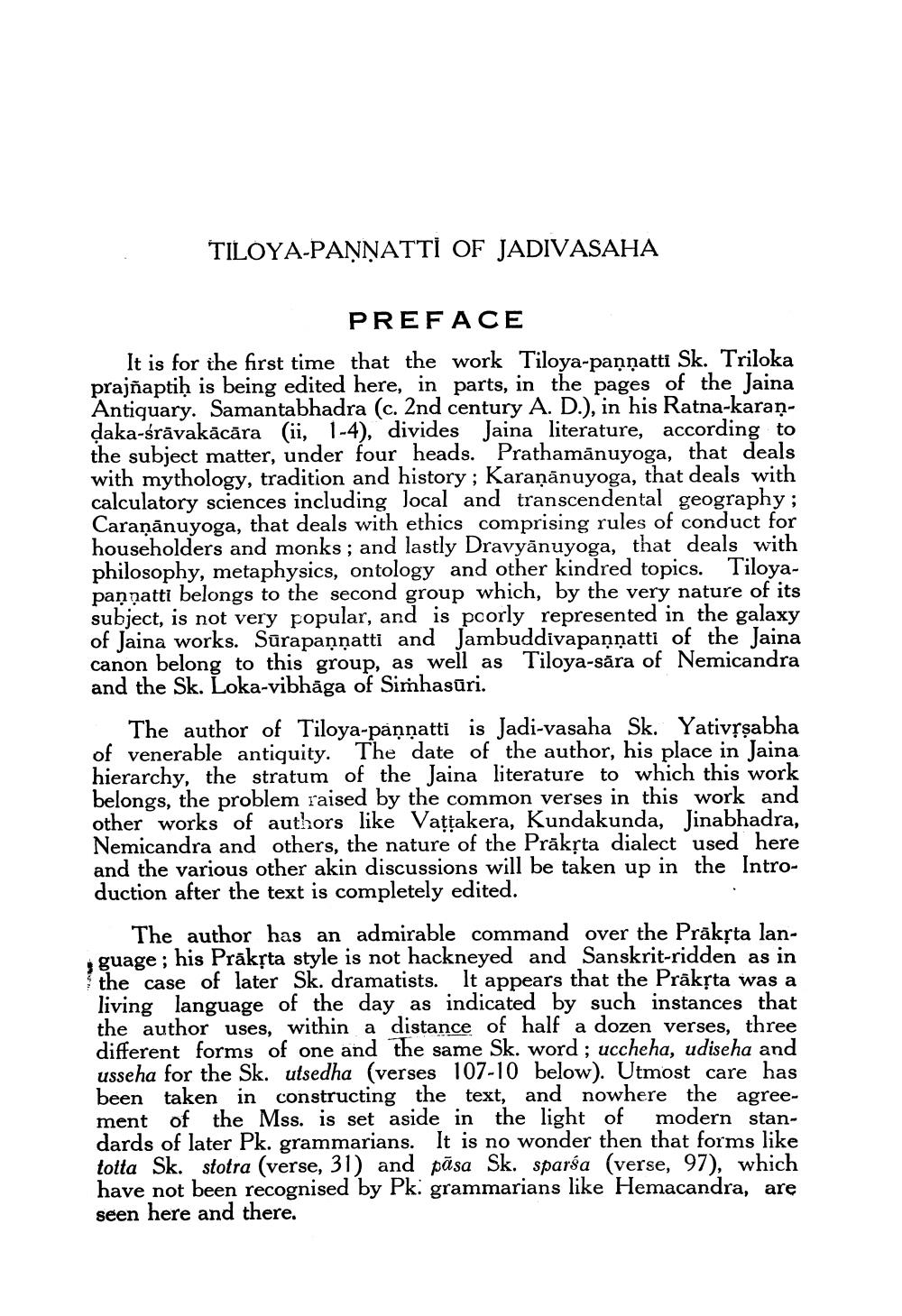________________
TILOYA-PAŅŅATTİ OF JADIVASAHA
PREFACE
It is for the first time that the work Tiloya-pannatti Sk. Triloka prajñaptih is being edited here, in parts, in the pages of the Jaina Antiquary. Samantabhadra (c. 2nd century A. D.), in his Ratna-karandaka-srävakācāra (ii, 1-4), divides Jaina literature, according to the subject matter, under four heads. Prathamānuyoga, that deals with mythology, tradition and history; Karaṇānuyoga, that deals with calculatory sciences including local and transcendental geography ; Caranānuyoga, that deals with ethics comprising rules of conduct for householders and monks; and lastly Dravyānuyoga, that deals with philosophy, metaphysics, ontology and other kindred topics. Tiloyapaņņatti belongs to the second group which, by the very nature of its subject, is not very popular, and is poorly represented in the galaxy of Jaina works. Sürapannatti and Jambuddivapannatti of the Jaina canon belong to this group, as well as Tiloya-sära of Nemicandra and the Sk. Loka-vibhāga of Simhasūri.
The author of Tiloya-paņņatti is Jadi-vasaha Sk. Yativịşabha of venerable antiquity. The date of the author, his place in Jaina hierarchy, the stratum of the Jaina literature to which this work belongs, the problem raised by the common verses in this work and other works of authors like Vattakera, Kundakunda, Jinabhadra, Nemicandra and others, the nature of the Prāksta dialect used here and the various other akin discussions will be taken up in the Introduction after the text is completely edited.
The author has an admirable command over the Prākṣta language ; his Prakrta style is not hackneyed and Sanskrit-ridden as in the case of later Sk. dramatists. It appears that the Prākṣta was a living language of the day as indicated by such instances that the author uses, within a distance of half a dozen verses, three different forms of one and the same Sk. word; uccheha, udiseha and usseha for the Sk. utsedha (verses 107-10 below). Utmost care has been taken in constructing the text, and nowhere the agreement of the Mss. is set aside in the light of modern standards of later Pk. grammarians. It is no wonder then that forms like totta Sk. stotra (verse, 31) and pāsa Sk. sparsa (verse, 97), which have not been recognised by Pk: grammarians like Hemacandra, are seen here and there.




